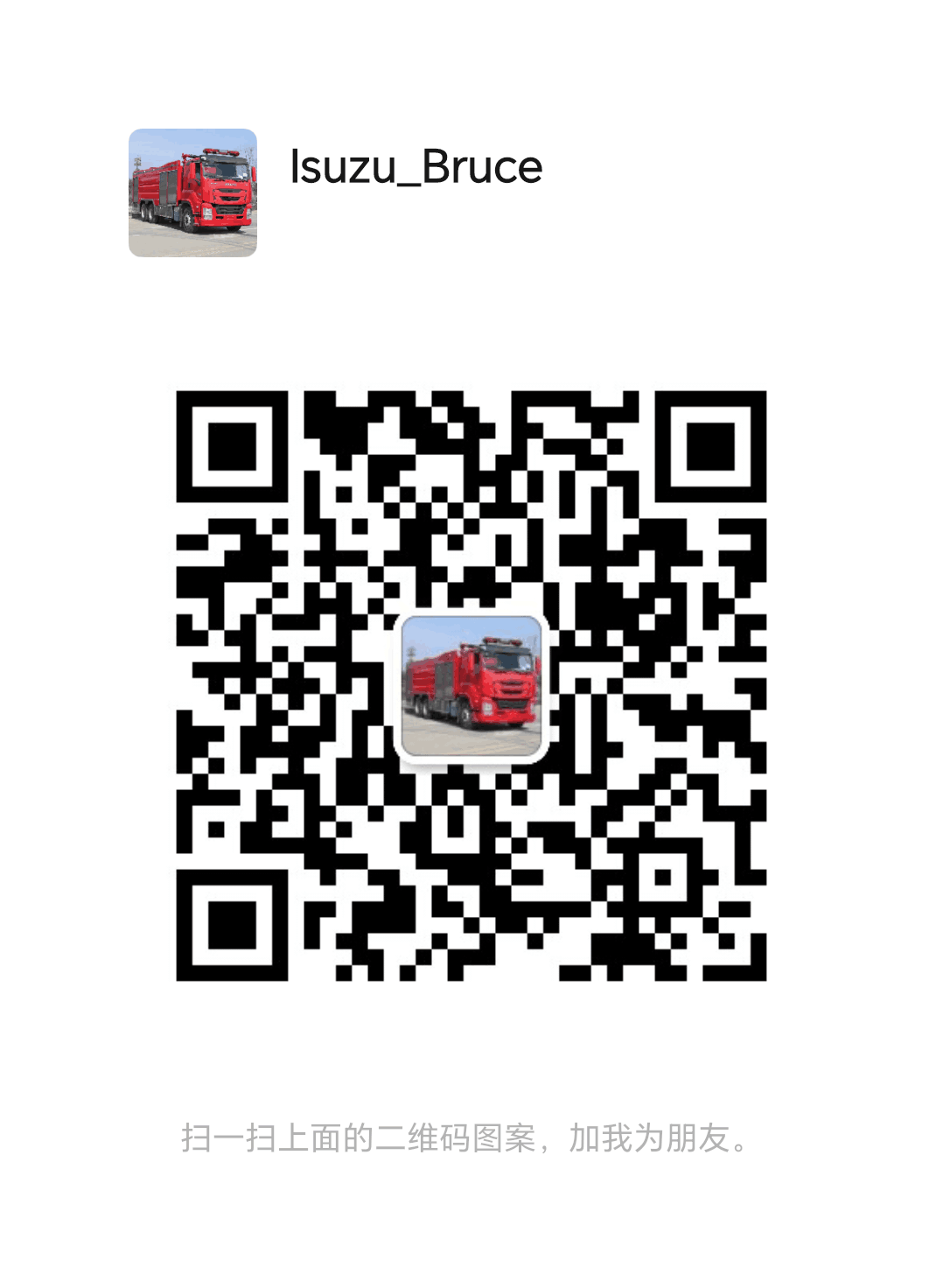


The significance of the correct use of Isuzu fire trucks is to ensure public safety and the safety of people's lives and property. The fire truck is one of the important tools for emergency rescue. It has multiple functions such as fire extinguishing, rescue and ambulance. It can quickly rush to the scene when fires and other emergencies occur, carry out fire fighting, rescue trapped people and first aid the injured. The significance of the correct use of Isuzu fire trucks is not only rapid response and arrival at the scene, but also includes skillful operation of fire trucks, good use of vehicle equipment and equipment for fire extinguishing and rescue, and coordination and cooperation with other rescue teams. Only when used correctly can the effectiveness of a fire truck be maximized.
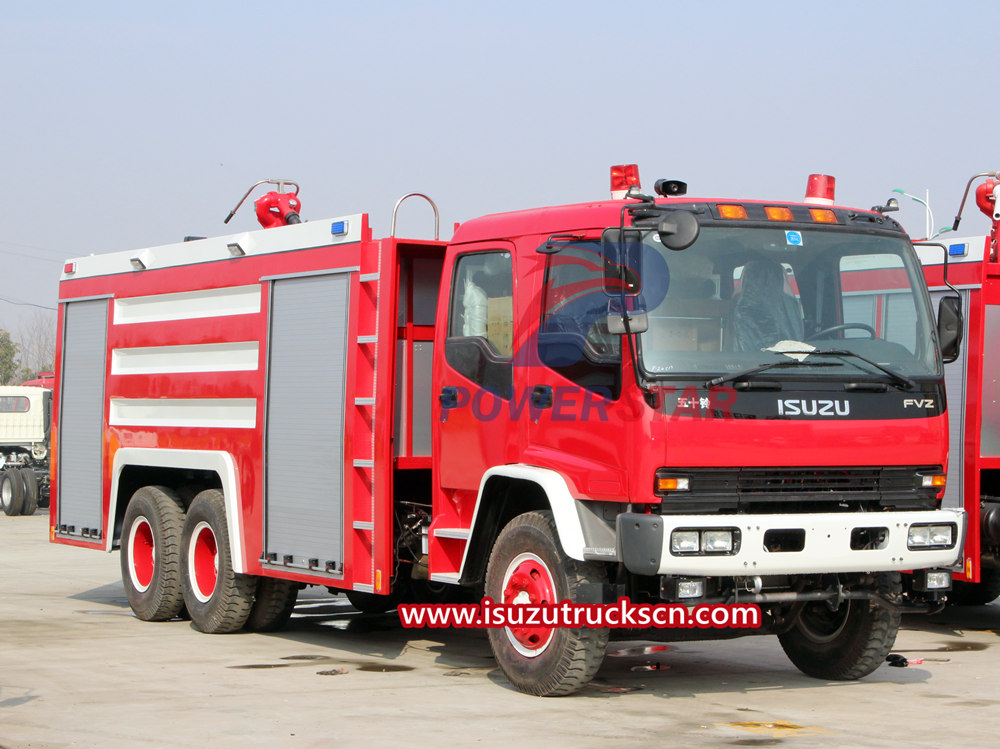
1. Fire pump operation method
a) In order to quickly complete the fire extinguishing task, the operation method of the fire pump must be correctly and skillfully mastered.
b) When the fire truck takes water from the water tank, push the butterfly valve handle in the direction of the opening indication to open the butterfly valve and water flows from the water tank into the pump.
c) When using the water from the fire hydrant, connect the suction pipe to the fire hydrant, and the water will flow from the fire hydrant into the pump.
d) When taking water from ponds, rivers or deep wells, connect the suction pipes (Image: Sealing rubber pads for each connecting pipe) and connect the water filter and sink it into the water (Image: The distance between the sink and the water source is the filter The distance from the upper end of the water device to the water surface is about 0.5 meters. If it is too shallow, it will produce vortex when absorbing water and affect the flow rate. But at the same time, it cannot touch the bottom of the water to prevent the inhalation of sludge and debris, which may cause blockage of the water suction pipeline and damage to the fire pump). Start the fire pump, press the water diversion button to start the water diversion and at the same time adjust the hand throttle to rotate the speed to about 2200r/min-2500r/min. Water will be introduced into the fire pump within 30 seconds. When the water is introduced, the water diversion will automatically stop working (note: this The water diversion button should be pressed immediately to reset it to avoid burning the water diversion unit during long-term operation).
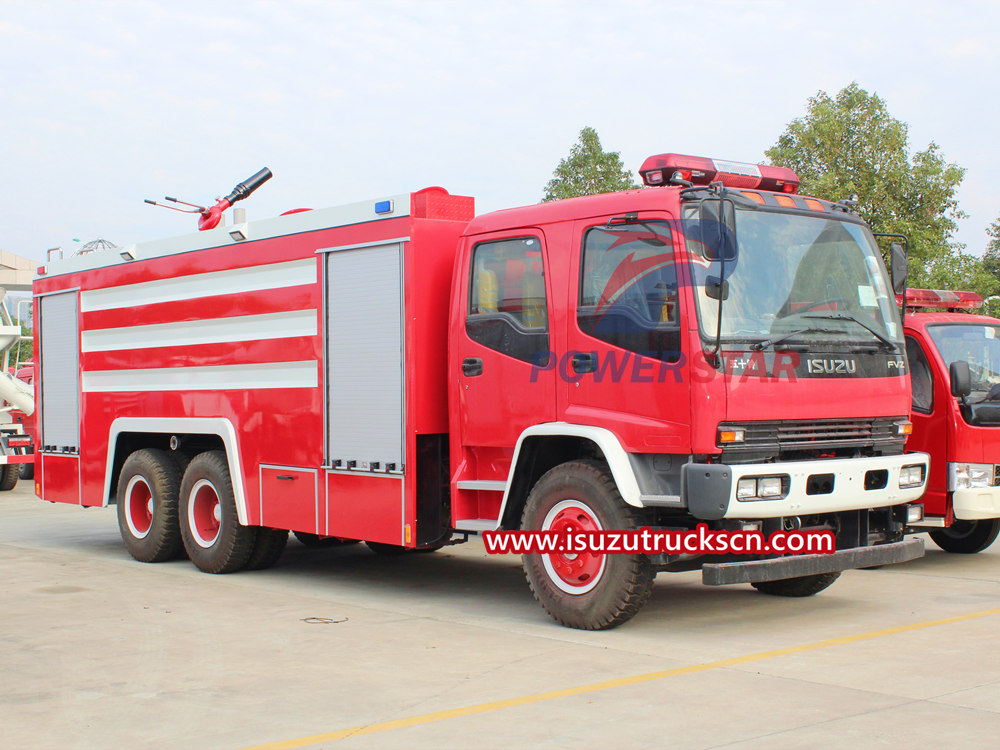
2. The tank is filled with water, and the water pump absorbs and discharges water. There are two ways to fill the tank with water:
1) Fill the fire hydrant with water: Park the vehicle according to the parking procedures, take out the fire hose and fire hydrant wrench; use the water hose to connect the water filling port inside and outside the vehicle pump chamber with the fire hydrant; use the fire hydrant wrench to open the fire hydrant valve until the tank is filled.
2) Water filling in rivers, deep wells, and ponds: Park the vehicle according to the parking procedures, take out the suction pipe, water filter, and suction pipe wrench; install the suction pipe on the water inlet of the fire pump and connect it to a suitable length. Install the water filter at the end and sink it into the river or pond.
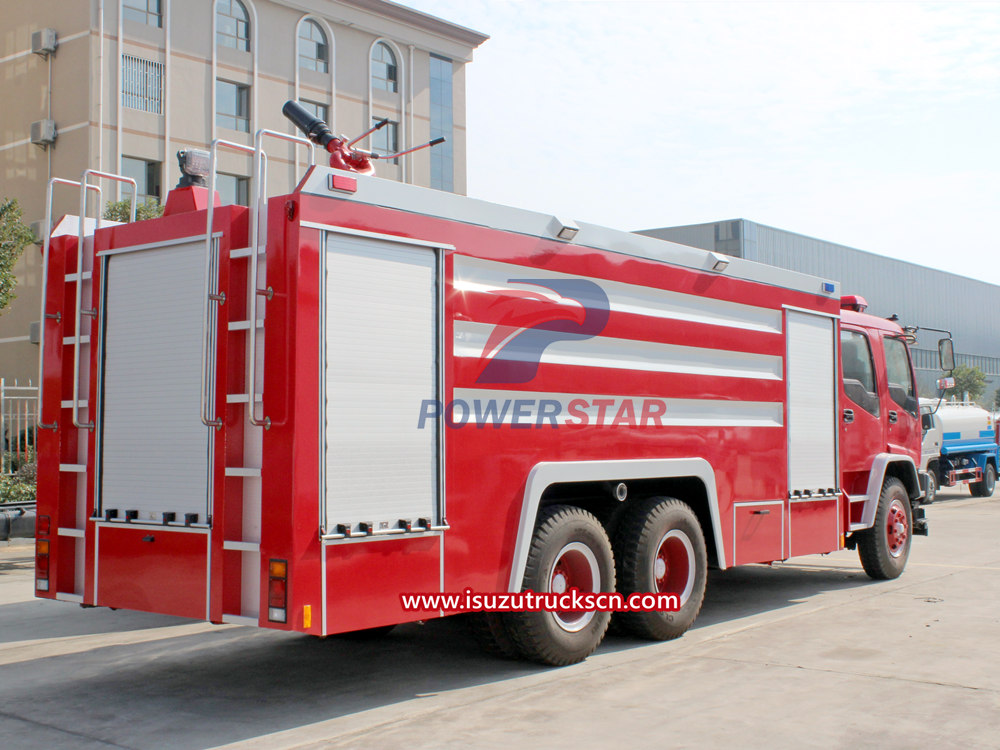
3. Use of other fire-fighting devices
a) Operation of fire monitors
Aim the fire cannon at the fire scene, adjust the angle, and open the fire cannon valve. When in use, according to specific needs, the handle of the fire muzzle can be adjusted to spray water column, bloom, water mist, etc.
b) Use of fire hose reels and medium pressure guns
When using a medium pressure gun. Pull out the hose to the required length, open the reel input valve, aim at the fire scene and pull the trigger. You can also adjust the water gun appropriately as needed to obtain the effect of spray or water jet.
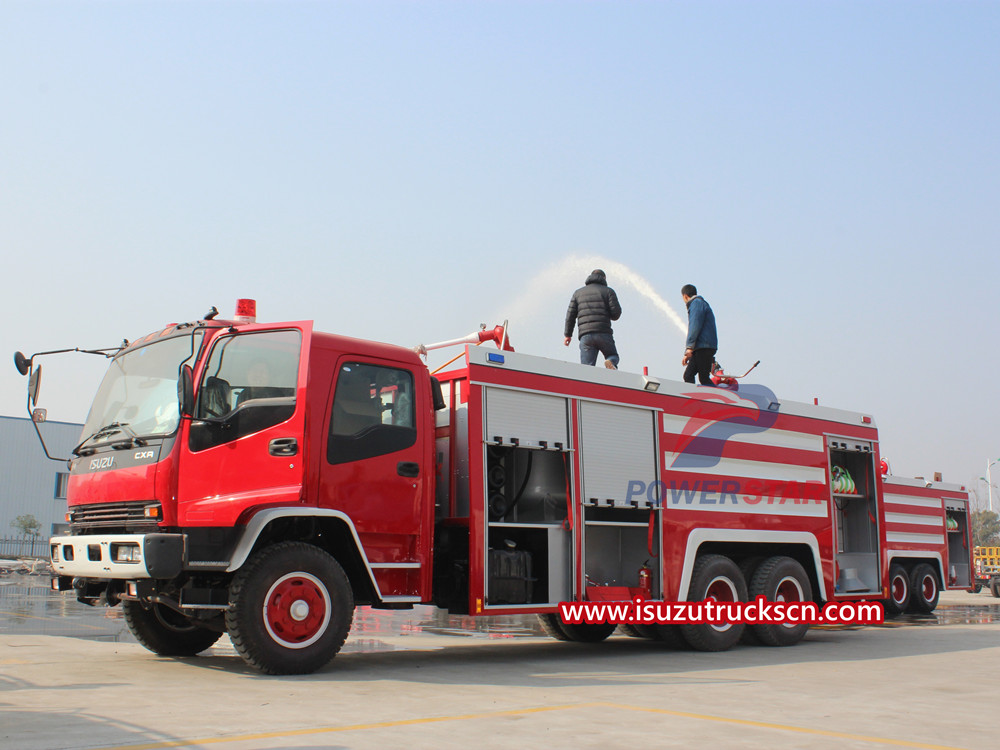
4. Precautions when using fire trucks
a) When the power take-off is engaged or disengaged, the engine speed should be reduced to facilitate smooth engagement or disengagement and avoid failures such as broken teeth or broken forks.
b) The idling time of the fire pump without water is not allowed to exceed 3 minutes, and high-speed operation without water is strictly prohibited.
c) During use, before closing all water outlet valves, the fire pump speed must be reduced to avoid the fire pump operating beyond the rated working pressure for a long time.
d) After the water diversion is completed, the water diversion button needs to be reset.
e) The power take-off will generate a certain amount of heat when working. Therefore, in summer or when the working time exceeds 10 minutes, the cooling water ball valve must be opened to force the power take-off to cool down. Continuous high-temperature operation will cause power take-off failure. After the work is completed, the remaining water in the power take-off device must be drained.
f) The fire pump may use corrosive water sources during the fire extinguishing process, so it must be rinsed with clean water after use and the residual water from the water pump must be drained.
g) When the ambient temperature is below 0°C, all relevant drain valves (pumps, gun mounts, pump pipeline valves, etc.) should be opened promptly after use of the vehicle to avoid freezing and cracking the fire pump and related components.
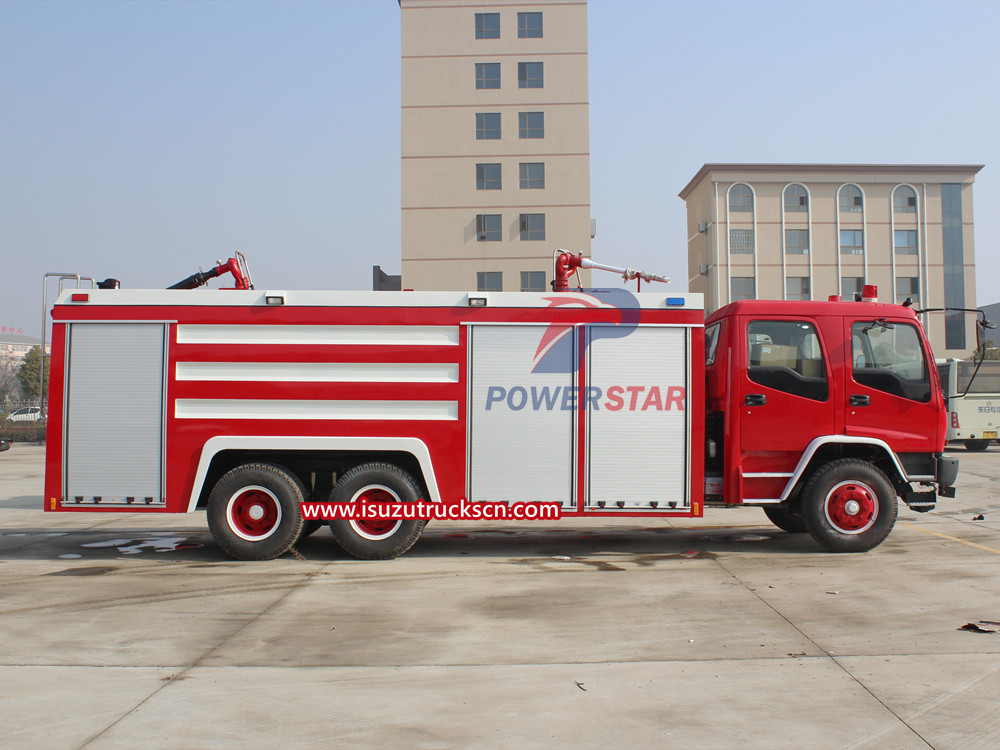
5. Daily inspection
a) Check whether there are any abnormal noises in the fire pump, power take-off, diversion pump, and transmission shaft, whether the lubrication of each rotating part is normal, and whether there is looseness or wear.
b) Whether the sealing conditions of various equipment interfaces and interfaces are good.
c) Check whether the lubricating oil in the power take-off, water diversion pump and gear box is normal and whether there is any deterioration or shortage. Are there any leaks in various parts?
d) Check whether the power take-off cooling water pipe is smooth and whether there is any blockage or leakage.
e) Whether the rotating parts of the fire monitor are flexible, whether the lubrication is normal, and whether there is any leakage.
f) Check and organize all types of equipment and components to keep them clean, dry and intact.
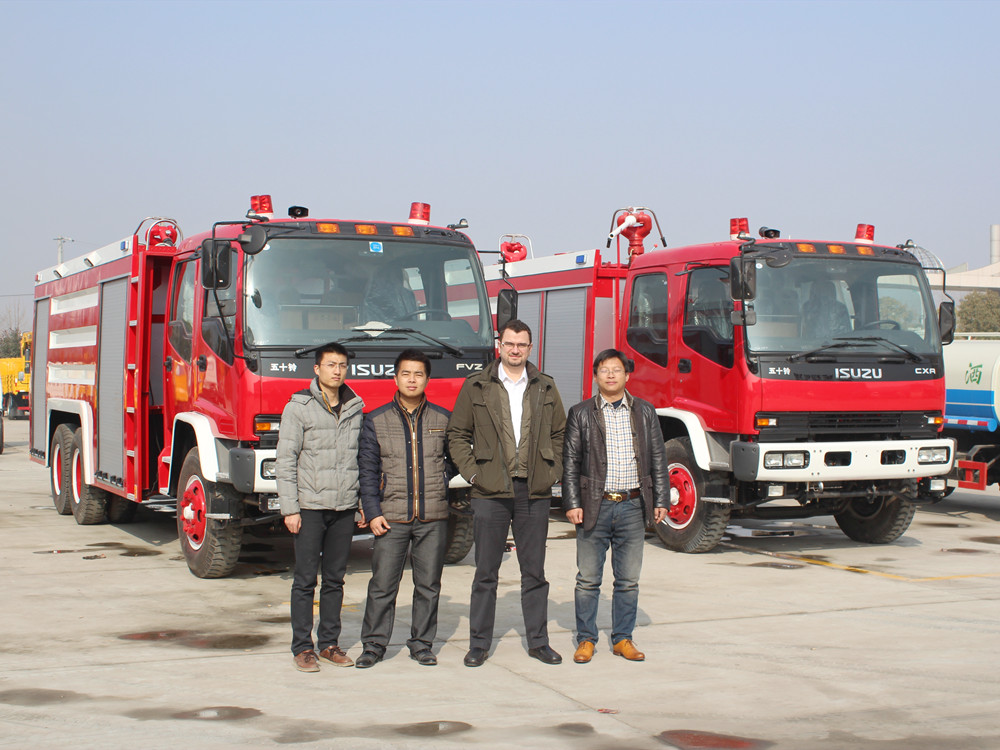
6. Maintenance
a) Crew compartment
Regularly check whether police lights, sirens and various electrical appliances, switches, insurances, etc. are intact and complete, whether the specifications of fuses comply with regulations, whether various switches are flexible and effective, and they should be repaired, maintained or replaced when necessary.
b) Container tank
Since the tank has been soaked in a full load state for many years, there will be some corrosion on the tank. Therefore, the tank should be inspected frequently or regularly. Once rust is found, effective anti-corrosion measures should be taken promptly to prevent the expansion of rust spots. The common treatment method is to clean the rusted parts, and then apply epoxy resin paint after they are fully dry.
c) Equipment boxes and equipment
Always check whether there is water in the equipment box, whether the rolling door can open and close flexibly, whether it is deformed or damaged, whether there is a lack of oil in the chute next to the door, and add grease if necessary. Whether all equipment is complete, dry, and intact with or without defects or breakage; whether the sealing rubber rings of each interface are complete and without damage; and whether the equipment is securely fixed.
d) Pump room
The facilities in the pump room are complete and intact. If there is water or oil stains, clean them up in time. Check whether the water and oil stains are caused by leaks in the fire protection system, so that problems can be discovered early and repaired in time.
e) Power take-off and transmission shaft
Check whether the oil level and oil quality of the power take-off are normal, and replenish and replace them if necessary; whether the power take-off is running normally, whether there is any abnormal noise, whether the gearing and separation are smooth, whether there is any blockage or automatic disengagement, and if necessary Dismantle, inspect and repair it regularly; check whether the pump drive shaft makes any abnormal noise and check whether the fasteners are loose or defective.
f) Fire pump
Every 3-6 hours of operation of the fire pump, each rotating part should be filled with grease; apply grease to the threads of the inlet and outlet of the fire pump and cover it with a lid.




